 |
 |
 |
 |
 |
 |
| |
 |
|
 |
 |
 |
  |
  |
 |
 |
 |
 |
|
|
 |
|
 |
 |
 |
BUILDING |
 |
|
 |
|
 |
 |
 |
| |
 |
| 
 |
Louvre - Département des Arts de l’Islam
Louvre - Department of Islamic Arts |
|
 |
 |
 |
 |
DESIGNER |
 |
|
|
 |
|
 |
 |
 |
| |
 |
|
 |
 |
 |
 |
DESCRIPTION |
 |
|
|
 |
|
 |
 |
 |
| Le projet |
 |
|
 |
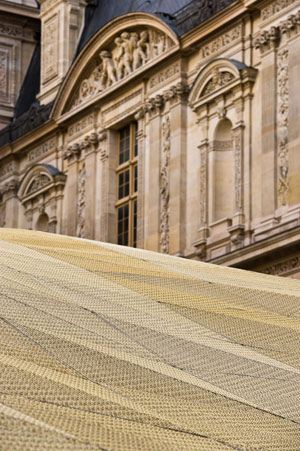 The creation of a new wing dedicated to Islamic art at the Louvre represents a decisive phase in the architectural history of the palace and in the development of the museum. The design and installation of these new galleries is the museum’s single largest expansion project since I. M. Pei created the now-famous Pyramid twenty years ago. The new wing will soon be home to one of the most exceptional collections of Islamic art in the world, owing to its geographic diversity, the historical periods covered, and the wide variety of materials and techniques represented. The creation of a new wing dedicated to Islamic art at the Louvre represents a decisive phase in the architectural history of the palace and in the development of the museum. The design and installation of these new galleries is the museum’s single largest expansion project since I. M. Pei created the now-famous Pyramid twenty years ago. The new wing will soon be home to one of the most exceptional collections of Islamic art in the world, owing to its geographic diversity, the historical periods covered, and the wide variety of materials and techniques represented.
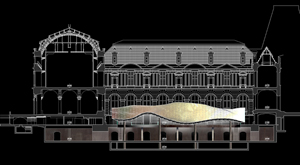 This unprecedented project grew out of one of the first observations made by Henri Loyrette upon his appointment as the Louvre’s president and director in 2001: the museum’s collection of Islamic art, due to its existence as a mere section of the Department of Near Eastern Antiquities, lacked sufficient space to reveal the full measure of its wondrous treasures to the public. From its inception, the resulting project received the unwavering support of Jacques Chirac, then president of France, who viewed it as a way for the Louvre to “solidify its mission as a universal cultural institution, while underlining for France and the rest of the world the essential contributions made by Islamic civilizations to our culture,” to encourage a dialogue of cultures and civilizations, and thus was instrumental in ensuring that the Louvre could reinstall the museum’s collection of Islamic art in a space where its indisputable richness and diversity could be more readily appreciated. On July 16, 2008, at the ground-breaking ceremony for the Louvre’s new galleries dedicated to Islamic art, current President Nicolas Sarkozy in turn emphasized the importance of this project as a way to promote understanding between peoples and cultures. This unprecedented project grew out of one of the first observations made by Henri Loyrette upon his appointment as the Louvre’s president and director in 2001: the museum’s collection of Islamic art, due to its existence as a mere section of the Department of Near Eastern Antiquities, lacked sufficient space to reveal the full measure of its wondrous treasures to the public. From its inception, the resulting project received the unwavering support of Jacques Chirac, then president of France, who viewed it as a way for the Louvre to “solidify its mission as a universal cultural institution, while underlining for France and the rest of the world the essential contributions made by Islamic civilizations to our culture,” to encourage a dialogue of cultures and civilizations, and thus was instrumental in ensuring that the Louvre could reinstall the museum’s collection of Islamic art in a space where its indisputable richness and diversity could be more readily appreciated. On July 16, 2008, at the ground-breaking ceremony for the Louvre’s new galleries dedicated to Islamic art, current President Nicolas Sarkozy in turn emphasized the importance of this project as a way to promote understanding between peoples and cultures.
Compared with its current very limited presentation, a far greater proportion of the more than 18,000 works in the department’s collections (which includes more than 3,000 objects on permanent loan from the collection of the Union Centrale des Arts Décoratifs) will be able to be displayed in the new exhibition spaces. The new wing will cover the entire cultural reach of the Islamic world, from Spain to India, and will span its full chronological range, from the seventh to the nineteenth century. These works, many of which will be on public view for the first time, have also been the focus of a comprehensive and prodigious restoration plan.
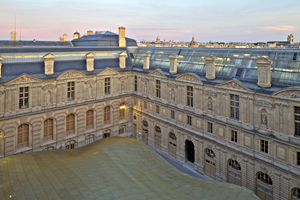 Throughout the eight hundred years of its history, the Louvre palace has repeatedly attracted each period’s most talented and influential innovators in the field of architecture. Set against the backdrop of the restored Cour Visconti, one of the palace’s most ornate interior courtyards, the new Department of Islamic Art will offer a expansive window into the extraordinarily rich and diverse artistic heritage of the Islamic world. In the immediate context at the Louvre, visitors will be able to explore aspects of contrast and continuity between collections, as the new wing will adjoin the museum’s presentation of late antique art from the eastern Mediterranean, including works from Roman and Coptic Egypt, Syria, Phoenicia and Palestine (in a redesigned exhibition space entitled “The Eastern Mediterranean Provinces of the Roman Empire”). Throughout the eight hundred years of its history, the Louvre palace has repeatedly attracted each period’s most talented and influential innovators in the field of architecture. Set against the backdrop of the restored Cour Visconti, one of the palace’s most ornate interior courtyards, the new Department of Islamic Art will offer a expansive window into the extraordinarily rich and diverse artistic heritage of the Islamic world. In the immediate context at the Louvre, visitors will be able to explore aspects of contrast and continuity between collections, as the new wing will adjoin the museum’s presentation of late antique art from the eastern Mediterranean, including works from Roman and Coptic Egypt, Syria, Phoenicia and Palestine (in a redesigned exhibition space entitled “The Eastern Mediterranean Provinces of the Roman Empire”).
The creation and integration of this new wing raised considerable architectural challenges at a site of such immense historical importance. To meet these challenges, the architects Rudy Ricciotti and Mario Bellini have achieved a subtle and elegant balance between the seventeenth-century courtyard’s neoclassical facades and the need for a contemporary yet universal homage to Islamic art by way of an undulating glass roof enclosing the galleries, which discreetly allows diffused natural light to fill the exhibition spaces. The entire edifice, a symphony of glass and metal, extends beneath the Cour Visconti’s existing facades to create two sub-levels in addition to the courtyard level, one of which will be used to display objects that are highly sensitive to light, while the other will house technical facilities.
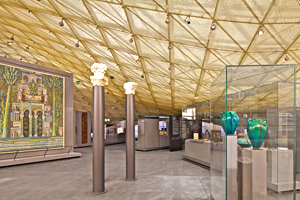 A feat at once architectural, cultural and artistic, this major project also takes on another dimension, which goes to the very heart of the Louvre’s mission as a universal museum, by breaking down barriers, crossing borders, and fostering a dialogue of cultures and civilizations. Today, the Louvre is a museum open to the world and, at the behest of numerous institutions worldwide, is present across all continents through exhibitions, archaeological excavations, as well as exhibition and museum planning and curatorial consulting. At a time when dialogue and exchanges between peoples and cultures are of fundamental importance, the new Department of Islamic Art will be a space and a venue paying tribute to and also furthering mutual understanding, building bridges between the East and the West where we can speak of our differences but also, and above all, our shared history and reciprocal influences over the centuries. A feat at once architectural, cultural and artistic, this major project also takes on another dimension, which goes to the very heart of the Louvre’s mission as a universal museum, by breaking down barriers, crossing borders, and fostering a dialogue of cultures and civilizations. Today, the Louvre is a museum open to the world and, at the behest of numerous institutions worldwide, is present across all continents through exhibitions, archaeological excavations, as well as exhibition and museum planning and curatorial consulting. At a time when dialogue and exchanges between peoples and cultures are of fundamental importance, the new Department of Islamic Art will be a space and a venue paying tribute to and also furthering mutual understanding, building bridges between the East and the West where we can speak of our differences but also, and above all, our shared history and reciprocal influences over the centuries.
The very name given to this new wing Department of Islamic Art is in keeping with an approach that the Louvre intends to embrace to its full extent. The objective is to present the luminous aspects of a civilization, its impact on a richly varied humanity, by way of a broad and inclusive panorama presenting very different cultures (Andalusian, Mamluk, Ottoman, Persian, etc.). More than merely inviting visitors to view a succession of works, the aim is to take them on a genuine journey of the senses to the heart of Islamic civilization. To this end, the plan for the new galleries incorporates a substantial outreach component conveyed in particular through a set of tools and resources designed to help visitors contextualize the works on display, situate works historically and geographically, decipher motifs and figures, and even test their own conclusions against those of specialists. |
|
 |
 |
 |
|
 |
|
| An innovative architectural solution |
 |
|
 |
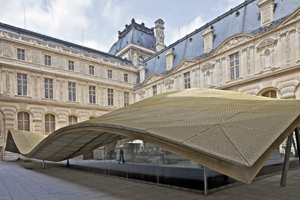 The Cour Visconti, one of the few spaces at the Louvre still available for development but which had remained inaccessible to the public, was selected as the backdrop for the future home of the new department. The winning architectural design, by Mario Bellini and Rudy Ricciotti, meets the challenge of constructing an avant-garde building on the premises of a protected historical monument. Stunning yet conveying an understated elegance, it fully satisfies the aims of this public works project, through a play of contrasts. The design involves the creation of exhibition spaces over an area of 2,800 square meters (about 30,000 square feet) on two levels, above another level devoted to technical facilities. As the focal point of this innovative architectural project, the new spaces in the Cour Visconti will be covered with an extraordinary structure, adding an element of surpassing originality, but one that does not detract from the beauty of the courtyard’s historical facades. The Cour Visconti, one of the few spaces at the Louvre still available for development but which had remained inaccessible to the public, was selected as the backdrop for the future home of the new department. The winning architectural design, by Mario Bellini and Rudy Ricciotti, meets the challenge of constructing an avant-garde building on the premises of a protected historical monument. Stunning yet conveying an understated elegance, it fully satisfies the aims of this public works project, through a play of contrasts. The design involves the creation of exhibition spaces over an area of 2,800 square meters (about 30,000 square feet) on two levels, above another level devoted to technical facilities. As the focal point of this innovative architectural project, the new spaces in the Cour Visconti will be covered with an extraordinary structure, adding an element of surpassing originality, but one that does not detract from the beauty of the courtyard’s historical facades.
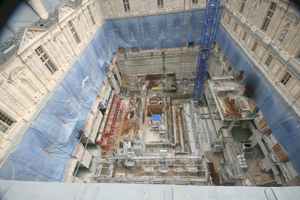 Following the restoration, from January to December 2006, of the Cour Visconti’s facades and statuary, under the direction of Michel Goutal, the Louvre’s senior historical monument architect, the courtyard was excavated to a depth of 12 meters (about 40 feet). The resulting several thousand cubic meters of earth were moved through a single access point just 2.7 meters (about 9 feet) wide. The foundations of the facades were reinforced, consolidated and extended down to the bottom of the excavated area, by applying the jet grouting technique, which uses high-pressure jet fluids (400 bars) to erode the existing soil and then mixes the cuttings with cement slurry to form what is known as “soilcrete.” This technique made possible the extension of the pre-existing foundations down to the limestone layer, in order to proceed with earthwork. Following the restoration, from January to December 2006, of the Cour Visconti’s facades and statuary, under the direction of Michel Goutal, the Louvre’s senior historical monument architect, the courtyard was excavated to a depth of 12 meters (about 40 feet). The resulting several thousand cubic meters of earth were moved through a single access point just 2.7 meters (about 9 feet) wide. The foundations of the facades were reinforced, consolidated and extended down to the bottom of the excavated area, by applying the jet grouting technique, which uses high-pressure jet fluids (400 bars) to erode the existing soil and then mixes the cuttings with cement slurry to form what is known as “soilcrete.” This technique made possible the extension of the pre-existing foundations down to the limestone layer, in order to proceed with earthwork.
The space thus created permitted the construction of two sub-levels:
- a level devoted to technical facilities with a floating foundation suitable for the installation of the equipment controlling electricity supply, air compression, temperature, humidity and ventilation for the exhibition areas.
- a parterre level with a foundation made of a single slab of reinforced concrete.
 The floor of the courtyard level is made of a composite steel and concrete structure, thus limiting the need for inconvenient columns breaking up the design of the galleries. The floor of the courtyard level is made of a composite steel and concrete structure, thus limiting the need for inconvenient columns breaking up the design of the galleries.
An in-situ cast concrete staircase spans the 6 meters (about 20 feet) separating the first sub-level from the courtyard level.
On the ground floor of the new galleries, vertical partitions made of transparent glass allow visitors to look out on the courtyard’s facades. The use of glass without the addition of obtrusive metal structures ensures a clear vista. Each glass panel is about 2.40 meters (8 feet) wide, thus aligning perfectly with the pattern of the joins in the lead work. Panel heights vary from 0.5 to 6 meters (about 1.6 to 19.5 feet).
Only low-iron or extra-clear glass materials are used, treated with iron oxides to avoid green reflections.
The brass-speckled black floor tiles echo the chromatic marriage between the golden tones of the glass roof and the black-colored self-compacting concrete of the walls. This muted atmosphere directs the visitor’s focus to the precious Islamic art objects displayed in these new galleries, in all their varying colors and motifs.
The first sub-level is also inhabited by the vision afforded via the overlying structure thanks to glass openings in the floor of the courtyard level, reinforcing the unifying role of the unique luminous veil encasing the collection.
Visitors looking out from the surrounding galleries in the Louvre palace itself (Galerie Daru, the mosaic gallery on the museum’s upper ground floor, Salle des Etats on the first floor), will marvel at the undulations of the roof floating over this innovative edifice, giving the entire structure its poetic dimension. |
|
 |
 |
 |
|
 |
|
| The Glass Roof |
 |
|
 |
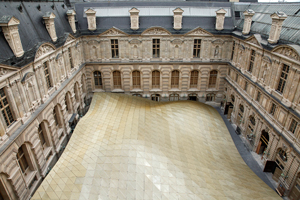 Together with the Cour Lefuel, the Cour Visconti is the most ornate of the Louvre palace’s interior courtyards. Architecturally complex because its buildings were built in several stages, it does not offer a uninterrupted cornice on which a glass roof might have been easily installed. In addition, such a structure would have been situated more than one hundred feet over the collections and thus would have visually overpowered them. The solution selected by the winning architectural design team therefore proposed the creation of a sail-like glass and metal canopy set back from the historic facades on all sides (at a distance of between 2.5 and 4 meters, thus between about 8 and 13 feet). Together with the Cour Lefuel, the Cour Visconti is the most ornate of the Louvre palace’s interior courtyards. Architecturally complex because its buildings were built in several stages, it does not offer a uninterrupted cornice on which a glass roof might have been easily installed. In addition, such a structure would have been situated more than one hundred feet over the collections and thus would have visually overpowered them. The solution selected by the winning architectural design team therefore proposed the creation of a sail-like glass and metal canopy set back from the historic facades on all sides (at a distance of between 2.5 and 4 meters, thus between about 8 and 13 feet).
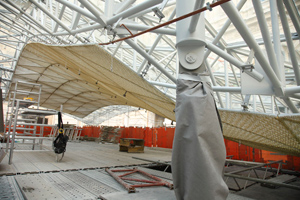 Truly an architectural feat, this roof floats over the galleries in the manner of a golden, iridescent cloud, fondly referred to as a “dragonfly wing” by Mario Bellini. Truly an architectural feat, this roof floats over the galleries in the manner of a golden, iridescent cloud, fondly referred to as a “dragonfly wing” by Mario Bellini.
The supporting structure is comprised of a free-form double lattice system of round steel tubes all having the same diameter but of thicknesses varying between 4 and 12 millimeters, depending on the weight supported by the tubes. The luminous veil is formed of three layers: a system of glass panels, making the structure impervious to water, and two metallic mesh sheets fitted above and below the system of glass panels, bathing the entire roof in a bright and translucent anodized gold color. The exterior mesh filters daylight and the interior mesh serves as the ceiling for the galleries. The interior mesh is also lined with a honeycomb panel that, without limiting the amount of natural light getting through, restricts side views while favoring direct views of the outside, thus creating the play of contrasts characterizing the structure.
The three-dimensional geometry of this glass and metal skin required extensive computer modeling efforts, in order to determine the respective positions and angles of inclination for each of the triangles in the structure. The thickness of the canopy varies, as required by the supporting structure: thicker where it is fitted to the load-bearing columns and thinner at the edges, thus underscoring the undulating effect. The surface of the metallic mesh is composed of some 2,350 triangles, which when projected on a horizontal plane form isosceles right-angled triangles whose two equal sides are about 1.20 meters (4 feet) in length. The panels may be opened for maintenance purposes.
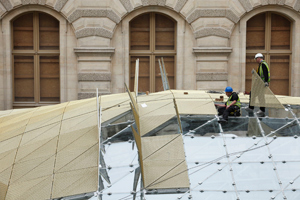 In all, a weight of no less than 135 metric tons rests on eight circular inclined columns. Four of them reach all the way from the glass-and-metal canopy to the second sub-level below and are up to 9 meters (30 feet) high. Svelte in appearance, their diameter never exceeds 12 inches. In all, a weight of no less than 135 metric tons rests on eight circular inclined columns. Four of them reach all the way from the glass-and-metal canopy to the second sub-level below and are up to 9 meters (30 feet) high. Svelte in appearance, their diameter never exceeds 12 inches.
To aid in the assembly of this gigantic nesting toy, each of the more than 8,800 pieces of tubing was identified with a reference number immediately after being produced by an automated machine in Slovenia, so as to ensure that each piece would take its precise position in the structure. Forty-five pre-assembled elements were transported to the construction site.
In the Krakow workshop where the framework was manufactured, then in Paris, during the final phase, the perfection of the assembly was verified using highly precise measurement methods. To address the specific challenges of this innovative and unique project, certification was obtained under an ATEx (Appréciation Technique d’Expérimentation) procedure, with the aim of testing snow load resistance, heating and dilation between glass panels and joins to guarantee their water tightness, as well as the resilience over time of the entire edifice. It was also critical to make sure that there were no points at which rainwater might stagnate, although some of the inclines are smaller than 10 degrees.
Mario Bellini and Rudy Ricciotti, the project architects, joined forces with the engineering design consultancy BERIM and with the structural design consultancy HDA (Hugh Dutton Associés) for the technical analysis of the glass roof and the facades, with 8’18” for the lighting design, and with Peutz for the acoustic design. |
|
 |
 |
 |
|
 |
|
| Visiting the New Galleries |
 |
|
 |
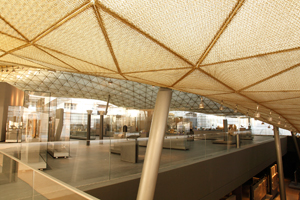 From the Pyramid, visitors will access the Denon wing and then arrive on the lower ground floor, on the level of the Cour Visconti. Rather than immediately taking the stairs leading to the upper ground floor, they will be enticed by the vision of the bronzed, curving shape enveloping the courtyard. From the Pyramid, visitors will access the Denon wing and then arrive on the lower ground floor, on the level of the Cour Visconti. Rather than immediately taking the stairs leading to the upper ground floor, they will be enticed by the vision of the bronzed, curving shape enveloping the courtyard.
The visit to the new galleries is designed as a perfect loop, encouraging visitors to move in a single direction while optimizing circulation patterns. Works dating from the seventh to the eleventh century are presented on the courtyard level, while the sub-level (or parterre level) extending under the Galerie Daru is devoted to works from the eleventh to the late eighteenth century, and in particular the museum’s celebrated collection of rugs and carpets.
The Louvre’s collections of Islamic art are thus located in a space directly adjoining the collections of late antique art from the eastern Mediterranean, of art from pre-classical Greece, Coptic or Roman Egypt, Syria, Phoenicia and Palestine, displayed in the galleries surrounding the Cour Visconti and thus brought into dialogue with the collection of Islamic art.
Rather than partitioning the space, the design of the exhibition areas favors the continuity of the visit. The absence of interruptions in the trajectory of the visit reinforces the notion of a discourse uniquely in rhythm with the moment of meditation and contemplation consciously intended by the project.
The concept for the exhibition spaces is the work of Mario Bellini and Renaud Piérard. |
|
 |
 |
 |
|
 |
|
| Architectural note by Rudy Ricciotti and Mario Bellini, architects |
 |
|
 |
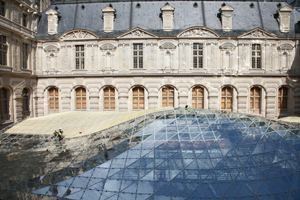 The idea of covering the Cour Visconti with a glass roof would hark back to a nineteenth-century concept (much in evidence in France and elsewhere) for a space that, until today, has freely lifted its gaze to the sky. A rueful architectural obstruction of this type would cast an unforgiving shadow on this courtyard’s facades, already not exactly bathed in light. Apportioning the Louvre’s Islamic art treasures over a space with too many levels would be to create a presentation robbing the museological discourse of its narrative force and identity. Creating mezzanines in the courtyard would be a clumsy solution emulating the consumerist culture and spatial organization of department stores. The idea of covering the Cour Visconti with a glass roof would hark back to a nineteenth-century concept (much in evidence in France and elsewhere) for a space that, until today, has freely lifted its gaze to the sky. A rueful architectural obstruction of this type would cast an unforgiving shadow on this courtyard’s facades, already not exactly bathed in light. Apportioning the Louvre’s Islamic art treasures over a space with too many levels would be to create a presentation robbing the museological discourse of its narrative force and identity. Creating mezzanines in the courtyard would be a clumsy solution emulating the consumerist culture and spatial organization of department stores.
Giving a new home to these marvels from the East in a closed courtyard bearing imposing witness to epic French stylistic movements without finding a way to open up the space would be to coerce an awkward twinned vision within four walls, recalling for the works contained, through a dire conceit, the ubiquitous conceptual presence of their container, from which the East would have no escape. Certainly, the Louvre does not subscribe to the view that the West is always best.
Let’s dream instead of a different approach, one which would create a home for Islamic art treasures inspired by a less grave and more tender attitude, calling to mind Montesquieu’s perspective on two Persian visitors to Paris.
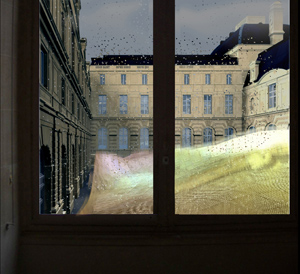 The Cour Visconti will not be covered and will remain visible. Since we needed to make the most of underground space as the last areas available for expansion at the museum, and with the knowledge that the Louvre already has a tradition of doing just that, the idea will be, once again, not to miss this opportunity. Furthermore, owing to their large windows, the two facades of the Galerie Daru encourage contact with the world outside and offer visitors a natural vantage point. Enjoying an ample view of the rain, the sky, the sun, the beautiful light of Paris, especially in winter when it snows, all this is a rare privilege afforded by the Louvre. Building a structure in this courtyard irreversibly creates an imbalance with the space famed as the home of the Winged Victory, introducing a semantic closeness between Greco-Roman art and Islamic art that tends to displace the former from its pedestal. This project wrests with a challenge that would have seemed to jeopardize the entire adventure, embracing the Louvre’s architectural heritage and Islamic art in a single vision, leaving aside doubt as a knee-jerk reaction. The Cour Visconti will not be covered and will remain visible. Since we needed to make the most of underground space as the last areas available for expansion at the museum, and with the knowledge that the Louvre already has a tradition of doing just that, the idea will be, once again, not to miss this opportunity. Furthermore, owing to their large windows, the two facades of the Galerie Daru encourage contact with the world outside and offer visitors a natural vantage point. Enjoying an ample view of the rain, the sky, the sun, the beautiful light of Paris, especially in winter when it snows, all this is a rare privilege afforded by the Louvre. Building a structure in this courtyard irreversibly creates an imbalance with the space famed as the home of the Winged Victory, introducing a semantic closeness between Greco-Roman art and Islamic art that tends to displace the former from its pedestal. This project wrests with a challenge that would have seemed to jeopardize the entire adventure, embracing the Louvre’s architectural heritage and Islamic art in a single vision, leaving aside doubt as a knee-jerk reaction.
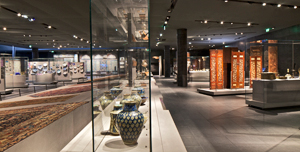 The project aims to organize the Louvre’s masterpieces of Islamic art on two cohesive levels, a ground floor and a parterre beneath. Visitors to the Louvre’s surrounding galleries on the ground floor will be able to appreciate the magical presence, the serene integration, and the positivist singularity of this new wing fully worthy of a great French museum. The project aims to organize the Louvre’s masterpieces of Islamic art on two cohesive levels, a ground floor and a parterre beneath. Visitors to the Louvre’s surrounding galleries on the ground floor will be able to appreciate the magical presence, the serene integration, and the positivist singularity of this new wing fully worthy of a great French museum.
The ground floor galleries will be covered with a glass roof enclosed within a metal mesh, discreetly filtering natural light and floating delicately over the collections. The parterre beneath will be visually linked to the ground floor by several well-conceived and limited openings. From anywhere on the ground floor, and from certain areas of the parterre as well, visitors will be able to admire the courtyard’s facades, not to mention the roof’s undulating iridescence. As can be seen in cross-section, the exhibition space at the museum devoted to three classical cultures is directly linked to the new Islamic art galleries.
In addition, this view of the project confirms the multiples exchanges of shared gazes between the Louvre’s Islamic art treasures and the facades of the Cour Visconti. The roof’s creases and folds create a silken veil offering a play of lustrous and jocular reflections. Between the windows of the Cour Visconti and the luminescent glow emanating from the new Department of Islamic Art, the Louvre’s evening visitors will most certainly be encouraged to share in that inquisitive curiosity for the cultures of the East celebrated by Montesquieu. |
|
 |
 |
 |
 |
 |
 |
 |
MATERIALS |
 |
|
|
 |
|
 |
 |
 |
 |
 |
|
metal, glass, steel, cement 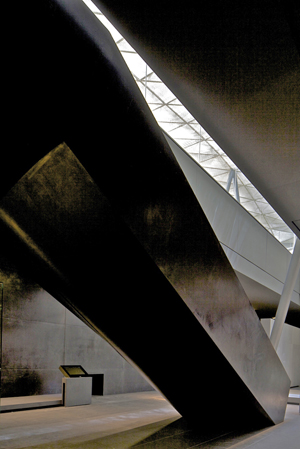 Concrete has been used throughout this project, in perfect harmony with the stone of the Louvre. Concrete has been used throughout this project, in perfect harmony with the stone of the Louvre.
- All walls are entirely coated in a 6cm deep Agilia® black concrete facing, thus adding depth to the space and providing a better backdrop for the collection.
- Also in black concrete is the monumental 16 metre long staircase linking the lower ground and ground floor levels. As well as enhancing the smooth flow of the space, the monolithic staircase is a work of art in itself. Its construction presented a technical challenge: the self- placing qualities of Lafarge Agilia® concrete enabled it to be injected from the base in one single pouring.
- Agilia® was also used for the 12 columns supporting the floor.
- Ductal®, Lafarge’s ultra-high performance fibre-reinforced concrete, was the material of choice for the staircase steps and risers to provide added resistance (6 to 8 times more resistant than traditional concrete).
- Ductal® was also used in the manufacture of the frame supporting the Mamluk Porch, one of the major pieces of the collection, and in the corridors which link the new space to the museum are other galleries.
|
|
 |
 |
 |
 |
BUSINESS ENTERPRISES |
 |
|
|
 |
|
 |
 |
 |
| Construction materials |
 |
|
 |
|
 |
 |
 |
 |
LOCATION |
 |
|
|
 |
|
 |
 |
 |

|
 |

|
Continent |
|
 |
|
Nation |
|
 |
|
Region |
|
 |
|
District |
|
 |
|
Town |
|
 |
|
Neighborhoods |
|
 |
|
Address |
|
 |
|
|
|
 |
|
Telephone |
|
 |
|
Website |
|
 |
|
 |
 |
 |
 |
MAP |
 |
|
|
 |
|
 |
 |
 |
| |
 |
|
 |
 |
 |
 |
|
TYPOLOGY |
 |
|
|
 |
|
 |
 |
 |
|
|
 |
ARCHITECTURE | Museums and buildings for exhibitions
Art museums
Operations on existing buildings
Renovation, rehabilitation and restructuring
Extension, superelevation
Other architectural structures
Roofs, casings
| |
 |
 |
 |
 |
CHRONOLOGY |
 |
|
|
 |
|
 |
 |
 |
Project |
 |
|
 |
| 
 |
2004 - 2006
project winner of competition
|
|
Realisation |
 |
|
 |
| 
 |
2008 - 2012 |
|
 |
 |
 |
 |
BIBILIOGRAPHIC REFERENCES |
 |
|
|
 |
|
 |
 |
 |
|
 |
 "Überdachung des Cour Visconti im Louvre Paris / A covering for the Cour Visconti at the Louvre in Paris", Detail 4/2013, april 2013 [Sanierung / Refurbishment / Réhabilitation / Riqualificazione], "Dokumentation / documentation" pp. 383-388 "Überdachung des Cour Visconti im Louvre Paris / A covering for the Cour Visconti at the Louvre in Paris", Detail 4/2013, april 2013 [Sanierung / Refurbishment / Réhabilitation / Riqualificazione], "Dokumentation / documentation" pp. 383-388 |
|
|
| "Department of Islamic Arts at Louvre, Paris, France. Mario Bellini and Rudy Ricciotti", a+u. Architecture and Urbanism 511, april 2013, pp. 86-99 |
|
|
"Die Zukunft des Louvre / The future of the Louvre", Bauwelt 5/2013, 25 januar/january 2013, pp. 14-33
Franck Hofmann, "Louvre Erweiterung. Die achte Abteilung / Roof over the Cour Visconti at the Louvre, Paris to form new galleries for the Departement des Arts de l'Islam", Bauwelt 5/2013, 25 januar/january 2013, pp. 14-19 (14-33) |
|
|
| Sam Jacob, "Nuvola d'oro / The golden cloud", Domus 965, gennaio/january 2013, pp. 62-67 |
|
|
| Joseph Giovannini, "Wave of contrast", Architect, december 2012 [Annual Design Review], "Center" pp. 60-63 |
|
|
| "Les arts de l'Islam au Louvre / Arts of Islam at the Louvre", Moniteur Architecture AMC 219, november 2012, pp. 18-20 |
|
|
| "Arts de l'Islam / Arts of Islam", Moniteur Architecture AMC 218, octobre/october 2012, pp. 16-17 |
|
|
| Caterina Testa, "Dipartimento di arti islamiche, Louvre / The department of islamic art, the Louvre, Paris, France", The Plan 63, dicembre 2011-gennaio 2102/december 2011-january 2012, pp. 48-56 |
|
|
| Francesco Della Casa, "Le Louvre revisite / The Louvre revisited", L'Architecture d'Aujourd'hui 386, novembre-décembre/november-december 2011, pp. 70-81 |
|
|
| Sean Weiss, "The empire's new veil", Log 16, spring/summer 2009, pp. 133-142 |
|
|
| Elena Cardani, "I cieli dell'Islam/At Musée du Louvre", L'Arca 212, marzo/march 2006, "l'Arca2" p. 90 |
|
|
| Claire Downey, "Louvre to build new Islamic gallery. Mario Bellini and Rudy Ricciotti", Architectural Record 9/2005, september 2005, p. 36 |
|
 |
 |
 |
 |
 |
 |
 |
CLIENT |
 |
|
|
 |
|
 |
 |
 |
| |
 |
|
 |
 |
 |
 |
AMOUNT |
 |
|
|
 |
|
 |
 |
 |
| |
 |
|
 |
 |
 |
 |
DIMENSIONAL
DATA |
 |
|
|
 |
|
 |
 |
 |
| Surface |
 |
|
 |
| sq.m. 4,600 (sq.ft. 50,000) |
|
| Number |
 |
|
 |
| metallic mesh: 2,350 triangles |
|
| Weight |
 |
|
 |
|
 |
 |
 |
 |
STRUCTURES |
 |
|
|
 |
|
 |
 |
 |
| |
 |
|
 |
 |
 |
 |
STAFF |
 |
|
|
 |
|
 |
 |
 |
|
 |
|
Structural consultant |
 |
HDA (Hugh Dutton Associés)
glass roof, facades |
|
Lighting design |
 |
|
Acoustical consultant |
 |
|
Exhibition design |
 |
| Mario Bellini, Renaud Piérard |
|
 |
 |
 |
 |
ANNOTATIONS |
 |
|
|
 |
|
 |
 |
 |
| |
 |
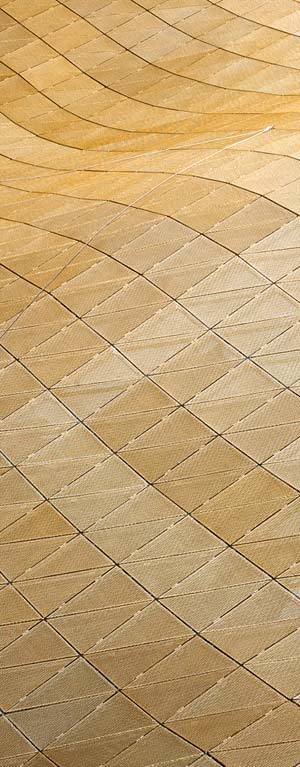 October 14, 2002 October 14, 2002
Speech by French President Jacques Chirac proposing the creation of a new department at the Louvre dedicated to Islamic art
2003
Development of the scientific and cultural program for the new department
August 1, 2003
Implementing decree establishing an eighth department at the Louvre dedicated to Islamic art
2004
Launch of the international competition to select architectural and engineering proposals for the creation of exhibition spaces and technical facilities
November 2, 2004
First meeting by jury to review proposals
July 26, 2005
President Chirac announces the competition winners at the Elysée Palace Launch of design studies
January–December 2006
Restoration of facades in the Cour Visconti
December 2006
Approval of preliminary designs
October 2007
Call for tenders launched
November 2007–July 2008
Preliminary works and site preparation
July 16, 2008
Ground-breaking ceremony attended by French President Nicolas Sarkozy, Prince Alwaleed bin Talal, Total Chairman Thierry Desmarest, and Lafarge Chairman & CEO Bruno Laffont
Early 2009
Major construction work begins, relaying of foundations
Mid-2009 to mid-2010
Diversion of existing technical facilities / Relaying of foundations and earthworks
Second half of 2010
Construction of basement walls
First half of 2011
Roof laying and technical installations
Second half of 2011
Finishes and fittings, building services and equipment, mechanical and electrical systems
December 2011
Completion of architectural surface
Early 2012
Building delivery
First half of 2012
Installation of collections
Summer 2012
New galleries open to the public |
|
 |
 |
 |
 |
RELATED PROJECTS |
 |
|
|
 |
|
 |
 |
 |
| |
 |
|
 |
 |
 |
 |
CREDITS |
 |
|
|
 |
|
 |
 |
 |
| |
 |
Photos © 2011 Musée du Louvre / Antoine Mongodin / Olivier Ouadah / SPACEM
Images © R. Ricciotti – M. Bellini / Musée du Louvre
Text edit by Musée du Louvre
|
|
 |
  |
 |
|
|